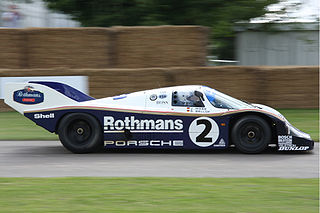Cars
- Estonia-1 (1958) Used a Serpuchov 500 boxer engine with VW gearbox. At its first race, the car immediately broke a new track record. 1 made.
- Estonia-2 (1959) Similar to Estonia 3 (both cars were released simultaneously), but with different suspension. 1 made.
- Estonia-3 (1959) Used an Irbit 500 engine with self-engineered gearbox. 36 series cars made by 1961
- Estonia-4 (1960) Built by Jaan Küünemäe, an ESO 500 speedway engine was used. 1 made.
- Estonia-5 (1961) Used a Wartburg 980cc 2-stroke engine. F-junior car. 2 made.
- Estonia-9 (1966) Used a Wartburg 980cc engine, 39 made
- Estonia-10 (1964) A Soviet F1 car. Used a 2500cc engine. 1 made.
- Estonia-11 (1964) Also a Soviet F1 car. 1 made.
- Estonia-12 (1964) Used a Moskvich 408 engine. 1 made.
- Estonia-13 (1964) Used a Moskvich 408 engine. 1 made.
- Estonia-14 (1966) Soviet F1 car. 1 made.
- Estonia-15 (1967/70) Used IZh Jupiter 350 tuned engines. This car was positioned between kart and formula racing, allowing young drivers to step into a bigger class. Top speed of 160 km/h. 83 made.
- Estonia-15M (1970/74) An evolution of the Estonia 15, featuring improved aerodynamics and better cooling for the engine. 136 made.
- Estonia-16 (1968) A Moskvich 412 1500 SOCH engine, magnesium wheels, and disc brakes on all wheels were used. Integrated CO2 fire extinguisher system. 6 made.
- Estonia 16M (1970/75) Evolution of the Estonia 16. 100 made.
- Estonia-17 (1974) Soviet F1 car. 1 made.
- Estonia-18 (1972/76) Quite similar to the Estonia 16, but with Lada 1300cc engine. 76 made.

- Estonia-18M (1976/77) Evolution of the Estonia 18. 37 made.
- Estonia-19 (1977/79) Radiators on the sides, wings at front and rear. Lada engine. 165 made.
- Estonia-20 (1980/82) New improved aerodynamics. Designed by Mart Kongo, a racing driver and engineer, and Jüri Iva. 154 made.

- Estonia-21 (1981) Designed by racing engineer and driver Raul Sarap, this car was a big breakthrough. It was the first time Estonia used ground effect to help their aerodynamics. A total of 295 cars were built. The Lada 1300/1600cc engine with a TARK 5-speed gearbox was used. Rocker arm suspension was used. Practically every component was built or modified at the TARK factory.
- Estonia-22 (1981) Built by Jüri Iva. The engine was from an IZh Jupiter 350 and the frame came from the Estonia 15. 1 made.
- Estonia 23 (1984) Ground effect test car, pull-rod suspensions.
- Estonia-24 (1985) Raul Sarap's next creation after the Estonia 21. An aluminum monocoque chassis was used and a Lada 1600 engine with fuel injection and electronic ignition was used. 4 made.
- Estonia-25 (1989) Designed by Aleksander Sadovsky and Jaanus Heinsar. It was their first production car with an aluminum monocoque. Monocoques (or "bathtubs") were built in a Russian military helicopter factory, and weighted just 39 kg. The car had push-rod suspension. Most cars were sold to Poland and East Germany. Aerodynamic solutions were tested at a Russian aircraft wind tunnel. Engines were 1600cc Lada engines and 1600–1800cc VW Golf GTI units for Scandinavian F4. Some cars were equipped with western racing components. 67 made.
- Estonia 26 (1994) Improved aerodynamics, VW Golf GTI engine. 6 made.
- Estonia 26-9 (2000) The last Estonia car. Improved aerodynamics, Hewland gearbox, AP brakes, dry sump VW engine, improved weight distribution, improved suspension. 1 made.
There was a plan to design and build an Estonia 27 car, but it was never implemented. However, factory CEO Juhan Sein mentored the Tallinn Formula Student team for their first cars, and so heritage and knowledge were passed on to the students. The TTTK/TTÜ F-Student team has been a success, being a top 10 contender early on.
- TARK Aleko JK173 (1989) This car was not produced by TARK at all. TARK facilities were planned to be used for production. The whole project was a scam and ended up as fiasco.[ citation needed ]














